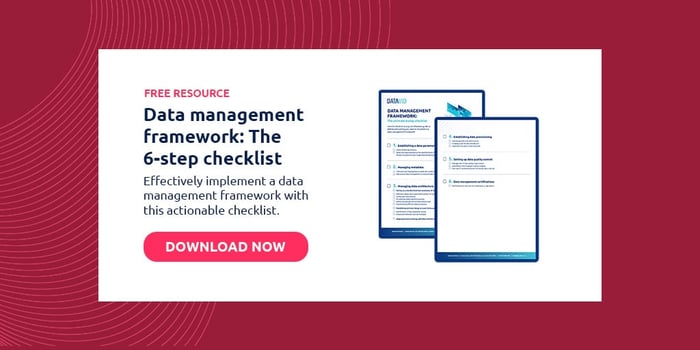2 minute read
Data management digital transformation: Unlocking insights for success
Data management digital transformation is a top priority for enterprises. Discover key insights to accelerate your transformation journey.
Table of contents
Digital transformation remains a top priority for companies across industry sectors, both within business units and amongst C suite executives.
IT vendors are piling in, offering leapfrog solutions to help companies—especially enterprises—in delivering superior value to their customers. Senior executives are adding digital transformation to their “must do now” agenda.
However, many institutions are still struggling with the workflow processes and the IT infrastructure behind the “currency” of their business – documents.
I started writing about Enterprise Content Management or ECM in my previous blog Data Management is critical for GRC and innovation. | Datavid.
Needless to say, that at its simplest, offices that were supposed to go paperless two decades ago are still dealing with paper. Scanned documents proliferate in email before being stored in ad hoc content stores.
“We don’t have a data lake, it’s a data swamp” quipped one business user.
Deriving data insights
All businesses need to derive smart insights from enterprise data. The data types are diverse from social media, web data to sensors and devices.
But how can one achieve it?
Well, it is a journey.
A journey which starts with an ability to integrate all types of data and make it searchable for e-discovery.
Business applications also need to be integrated to deliver data insight and adjust to the workflow of, for example, a compliance officer. MarkLogic can help with the first challenge, and Datavid can help with the latter.
Dealing with silos
In fact, MarkLogic and Datavid are already partnering with a number of customers. Syngenta is one example.
MarkLogic’s CMO said that when it comes to, for example, insurance markets:
The challenge is that document management systems and content management systems are varied and in most cases have siloed infrastructures across Claims, Policy and Customer facing applications. Ironically, few of these systems can actually be called enterprise content management platforms.
According to Gartner, Enterprise content management (ECM) is used to create, store, distribute, discover, archive and manage unstructured content (such as scanned documents, email, reports, etc), and ultimately analyse usage to enable organisations to deliver relevant content to users where and when they need it.
How to make an ECM project a success
It won’t be a surprise that a lot of ECM projects fail because they are too hard to implement, or lead to non-compliance by users resulting in systems full of documents that nobody can find or use.
Today’s Enterprise Content or Document Management system must be able to:
- Reduce the time of e-discovery from hours to seconds. This was one of the themes discussed at a recent Big Data London Exhibition.
- Data security. Far-reaching breaches and hacks have put security at the top of the MUST pile. Conventional wisdom would suggest that outsider attacks are the prime culprit, but according to the SANS Institute, almost half (46 percent) of security breaches are from the inside. You can read more about Data security in a related blog from MarkLogic Cybersecurity: Shifting Focus to Insider Threats, Locking Down Data.
- Compliance requests.
Frequently Asked Questions
What is the importance of data management in digital transformation?
Data management is crucial in digital transformation as it enables data-driven decision-making, facilitates data integration, ensures data quality and security, supports agile operations, and enables scalability and flexibility to adapt to changing digital needs.
What are the 4 main areas of digital transformation?
The four main areas of digital transformation are customer experience, operational efficiency, business model innovation, and strategic insights.
What is the relationship between data and digital transformation?
Data is integral to digital transformation, serving as the foundation for innovation, decision-making, and operational improvement. It enables organisations to gain insights, optimise processes, and identify new opportunities, driving growth and competitiveness in the digital landscape.




